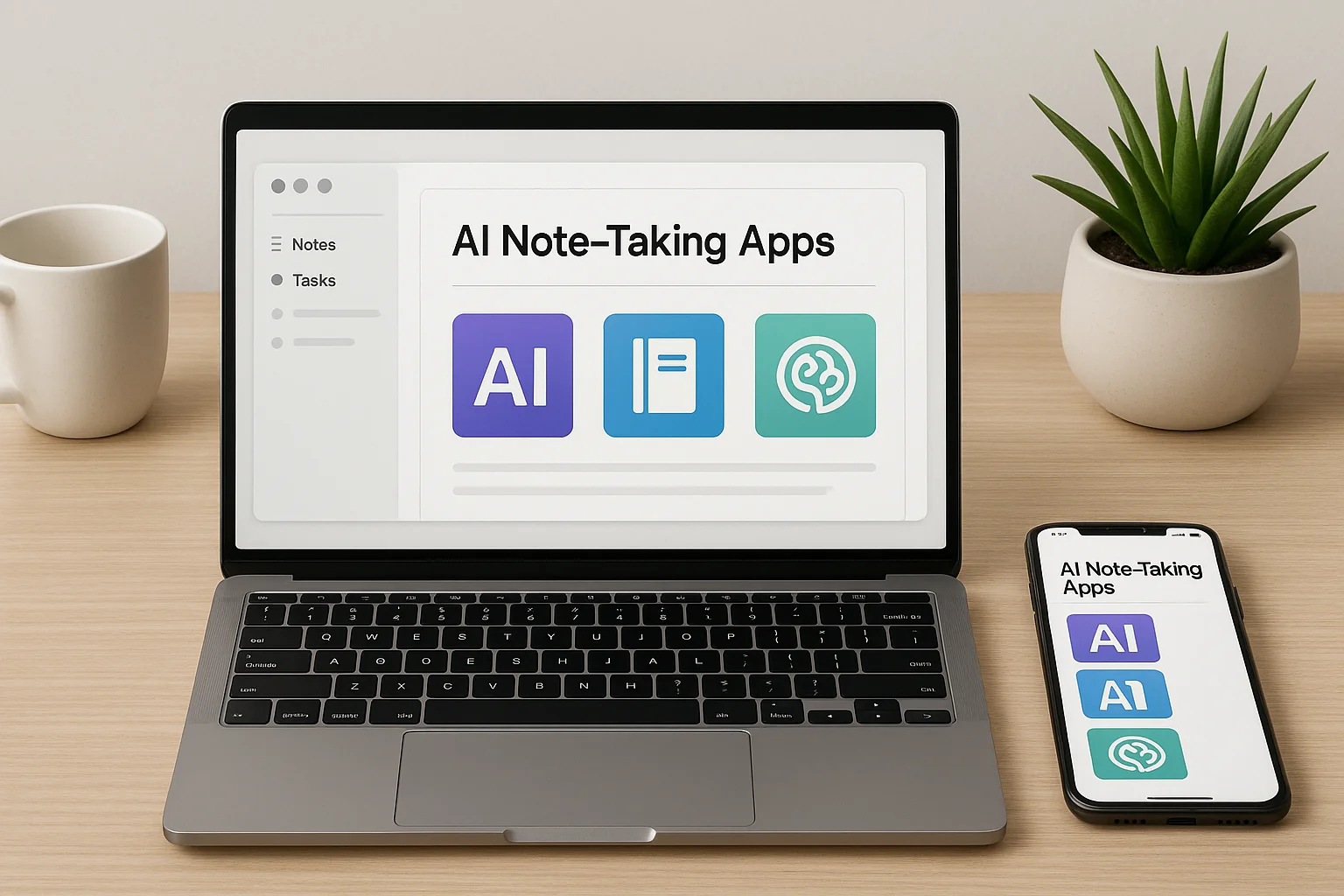Now Reading: 10 Best AI for Email Management and Sorting
-
01
10 Best AI for Email Management and Sorting
10 Best AI for Email Management and Sorting

Are you drowning in emails with no end in sight? What if you could cut your email management time in half-or even more? I’ve spent months testing the best AI for email management and sorting tools to find solutions that actually work. From inbox prioritization to automatic categorization and smart replies, these AI assistants are changing how we handle email forever. Let me show you which ones are worth your time and money.
SaneBox
SaneBox stands out as one of the most powerful AI email management tools I’ve tested. It works with virtually any email client, making it incredibly versatile regardless of your preferred platform.
Key Features:
- AI-powered inbox sorting and prioritization
- Preset folders like SaneLater for unimportant emails
- SaneBlackHole for permanently blocking unwanted senders
- Email snoozing and follow-up reminders
- Daily digest summarizing folder activity
Pricing:
- Appetizer plan: $0.07 daily or $24 annually
- Snack plan: $7 monthly or $59 annually (with 3 months free)
- Lunch plan: $12 monthly or $99 annually (with 3 months free)
- Dinner plan: $36 monthly or $299 annually (with 3 months free)
SaneBox offers a 14-day free trial so you can test all features before committing.
Pros:
- Works with Gmail, Outlook, iCloud, Yahoo, and other IMAP accounts
- No need to change email clients or learn new interfaces
- Highly effective at identifying important vs. unimportant emails
- Great for follow-up tracking
Cons:
- Requires some initial time investment to train the AI
- Higher pricing tiers can be expensive for individual users
Best for: Professionals dealing with high email volumes who want to maintain their current email client while gaining powerful sorting capabilities.
What I love most about SaneBox is how it learns from your behavior. If you move an email from one folder to another, it remembers this pattern for future sorting. This adaptive learning makes it increasingly accurate over time, which is exactly what you want from an AI assistant.
Superhuman
Superhuman has built a reputation as the Ferrari of email clients, focusing on speed and efficiency with powerful AI capabilities under the hood.
Key Features:
- Ultra-fast, keyboard-shortcut-driven interface
- AI-powered email prioritization
- Smart inbox that highlights important messages
- Split inbox for better organization
- Read status tracking and scheduled follow-ups
Pricing:
Superhuman comes at a premium price point of $30/month, which is higher than many alternatives.
Pros:
- Incredibly fast email processing
- Clean, minimalist design reduces distractions
- Powerful keyboard shortcuts for power users
- Excellent mobile apps
Cons:
- Expensive compared to other options
- Currently works primarily with Gmail and Google Workspace
Best for: Executives and professionals who process hundreds of emails daily and value speed above all else.
I was initially skeptical about Superhuman’s price tag, but after using it for a month, I understood the appeal. The speed at which you can process emails is remarkable, and the AI prioritization genuinely helps surface what matters. It’s not for everyone, but if email is a significant part of your workday, the time savings can justify the cost.
Useful Articles:
Microsoft Outlook with Copilot
Microsoft has integrated its powerful Copilot AI into Outlook, creating a robust email management system, especially for those already in the Microsoft ecosystem.
Key Features:
- AI-powered email summarization and prioritization
- Smart reply suggestions based on email context
- Meeting scheduling assistance
- Document attachment suggestions
- Seamless integration with Microsoft 365 suite
Pricing:
Requires a Microsoft 365 subscription, with business plans starting at around $12.50 per user per month.
Pros:
- Deep integration with other Microsoft tools
- Powerful AI capabilities for sorting and responding
- Familiar interface for existing Outlook users
- Enterprise-grade security
Cons:
- Full features require Microsoft 365 subscription
- AI capabilities may vary depending on subscription level
Best for: Businesses and professionals already invested in the Microsoft ecosystem who want integrated AI capabilities.
As someone who uses Microsoft tools daily, I found Outlook with Copilot to be a natural extension of my workflow. The AI doesn’t feel bolted on but rather seamlessly integrated. I particularly appreciate how it suggests replies based on my writing style and previous communications.
Reachinbox AI
Designed primarily for business email outreach, Reachinbox AI offers specialized tools to manage large volumes of emails efficiently.
Key Features:
- AI-powered email organization
- Email tracking and analytics
- Response templates and suggestions
- User-friendly interface
- Campaign management tools
Pricing:
Reachinbox AI offers tiered pricing based on email volume and features needed, starting around $15/month for basic features.
Pros:
- Excellent for sales and marketing teams
- Detailed analytics on email performance
- Clean, intuitive interface
Cons:
- Limited integrations with external tools
- Some advanced features require premium subscriptions
Best for: Sales teams, marketers, and businesses focused on email outreach campaigns.
Reachinbox AI impressed me with its focus on business communication. Unlike general email managers, it’s specifically designed for professionals who use email as a primary outreach tool. The analytics are particularly valuable, showing open rates, response times, and engagement patterns that help refine communication strategies.
Useful Articles:
Gmail with Gemini AI
Google’s email platform enhanced with Gemini AI offers a powerful yet simple solution for email management.
Key Features:
- Smart Compose for drafting emails
- Smart Reply for quick responses
- Advanced natural language search
- Priority inbox for important messages
- AI-powered categorization (Primary, Social, Promotions, etc.)
Pricing:
- Free with basic Gmail account
- Enhanced features with Google Workspace subscriptions starting at $6/month
Pros:
- Free basic AI features
- Seamless integration with Google ecosystem
- Constantly improving AI capabilities
- Excellent spam filtering
Cons:
- Most advanced features require Workspace subscription
- Less specialized than dedicated email management tools
Best for: General users and small businesses looking for solid AI email management without additional costs.
I use Gmail with Gemini daily, and the AI features have become indispensable. Smart Compose saves me countless keystrokes, while the categorization system keeps my inbox organized without any effort on my part. For many users, this built-in AI might be sufficient without needing a specialized tool.
Spark
Spark combines smart sorting with collaboration features, making it suitable for both individuals and teams.
Key Features:
- AI for smart email sorting
- Team collaboration tools
- Shared inbox functionality
- Smart notifications for important emails
- Email templates and scheduling
Pricing:
- Free plan for basic personal use
- Premium plan at $7.99/month per user
- Enterprise options available for larger teams
Pros:
- Excellent mobile apps
- Great collaboration features
- Clean, modern interface
- Works with multiple email providers
Cons:
- Some advanced features locked behind premium plan
- Team features require everyone to use Spark
Best for: Small teams who collaborate on emails and individuals who want a smart, modern email client.
Spark strikes a nice balance between individual and team email management. I particularly like how the AI prioritizes emails based on my interaction patterns, pushing less important messages to the background. The collaboration features are a game-changer for teams who need to work together on email responses.
Useful Articles:
Inbox Zero
For those seeking flexible automation, Inbox Zero offers powerful AI capabilities to streamline email management.
Key Features:
- AI automation for archiving, labeling, and replying
- Bulk unsubscribe functionality
- Analytics showing who emails you most
- Cold email blocker
- One-click actions for common email tasks
Pricing:
- Free plan available with limited features
- Premium plans starting at $10/month
Pros:
- Excellent automation capabilities
- Simple, intuitive interface
- Works well with Gmail
- Great unsubscribe features
Cons:
- Limited email provider support (primarily Gmail)
- Some advanced features require premium subscription
Best for: Gmail users looking to automate their inbox management and reduce time spent on email.
Inbox Zero helped me cut my email processing time dramatically. The automation rules are powerful yet easy to set up, and the bulk unsubscribe feature helped me eliminate dozens of newsletter subscriptions in minutes. It’s particularly good at identifying and handling low-priority emails that don’t need your immediate attention.
Front
Front excels at team collaboration for email management, making it ideal for customer support teams and departments that share inbox responsibilities.
Key Features:
- Team collaboration on email threads
- Shared inboxes
- AI-suggested replies
- Task assignment and tracking
- Integration with CRM and other business tools
Pricing:
- Starter plan at $19/user/month
- Plus plan at $49/user/month
- Prime plan at $99/user/month
Pros:
- Excellent for team email management
- Powerful collaboration tools
- Good integration with business systems
- Analytics for team performance
Cons:
- Higher price point
- Primarily designed for teams rather than individuals
Best for: Customer service teams, sales departments, and any group that manages shared email accounts.
Front transformed how my team handles shared email accounts. Before, we had confusion about who was responding to what, and emails would occasionally fall through the cracks. With Front, the assignment and tracking features ensure every message gets handled by the right person, and the AI suggestions speed up response time considerably.
Chuck Email
Chuck Email offers a streamlined approach to inbox management with its one-tap unsubscribe feature and AI-suggested deletions.
Key Features:
- One-tap unsubscribe functionality
- Bulk email sorting
- AI-suggested deletions for faster inbox cleaning
- Email analytics and insights
- Smart categorization
Pricing:
- Free plan with basic features
- Premium plan at $5/month with advanced features
Pros:
- Excellent unsubscribe and cleaning features
- Simple, intuitive interface
- Good for inbox decluttering
- Works with major email providers
Cons:
- Less focused on advanced sorting
- Fewer collaboration features than some alternatives
Best for: Individuals looking to declutter their inbox and reduce unwanted subscriptions.
Chuck Email is my go-to recommendation for friends who are overwhelmed by subscription emails. Its unsubscribe feature is the best I’ve seen, and the AI-suggested deletions are surprisingly accurate at identifying emails you’re unlikely to need. It’s less comprehensive than some other tools on this list, but excellent at its core functions.
Spike
Spike transforms your traditional email experience into a chat-style conversation hub, incorporating AI to help manage communications.
Key Features:
- Chat-style email interface
- AI-powered summaries of long email threads
- AI drafting tools for replies
- Built-in productivity tools (notes, calendar, tasks)
- Priority inbox
Pricing:
- Free plan for personal use
- Pro plan at $5/month
- Business plan at $10/month
- Enterprise options available
Pros:
- Innovative conversational interface
- Good integration of email with other productivity tools
- Works with multiple email providers
- Excellent mobile experience
Cons:
- Chat interface may not appeal to traditional email users
- Some features require adjustment period
Best for: Users who prefer messaging apps to traditional email and want an all-in-one productivity solution.
Spike completely changed how I think about email. By stripping away headers and signatures and presenting emails as chat messages, it makes communication feel more natural and immediate. The AI summaries are particularly useful for long threads, giving you the gist without having to read every message.
Comparison Table of Best AI for Email Management and Sorting
| Tool | Best For | Key AI Features | Pricing Starts At | Works With |
|---|---|---|---|---|
| SaneBox | High-volume email users | Inbox sorting, prioritization | $7/month | Any email provider |
| Superhuman | Speed-focused executives | Smart inbox, keyboard shortcuts | $30/month | Gmail, Google Workspace |
| Outlook with Copilot | Microsoft ecosystem users | Email summarization, smart replies | $12.50/month | Microsoft 365 |
| Reachinbox AI | Sales and marketing teams | Email tracking, analytics | $15/month | Multiple providers |
| Gmail with Gemini | General users | Smart compose, categorization | Free (basic) | Gmail |
| Spark | Small teams | Smart sorting, collaboration | Free (basic) | Multiple providers |
| Inbox Zero | Gmail automation seekers | Auto-archiving, labeling | $10/month | Primarily Gmail |
| Front | Customer service teams | Shared inbox, task assignment | $19/user/month | Multiple providers |
| Chuck Email | Inbox declutterers | Unsubscribe, suggested deletions | $5/month | Major providers |
| Spike | Messaging-style users | Conversational UI, summaries | $5/month | Multiple providers |
Finding the best AI for email management and sorting ultimately depends on your specific needs and workflow. Whether you’re drowning in a sea of unread messages or need better team collaboration, there’s an AI solution that can transform your inbox from a source of stress to a productivity powerhouse. I recommend starting with a free trial of the tool that seems most aligned with your priorities and seeing how it fits into your daily routine.





















